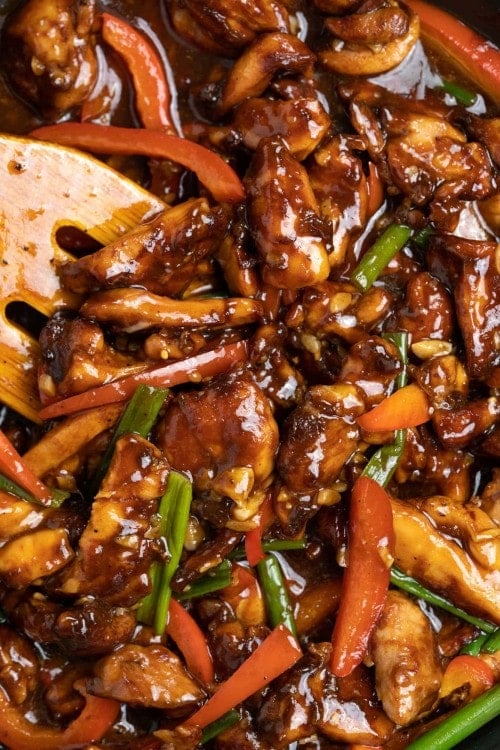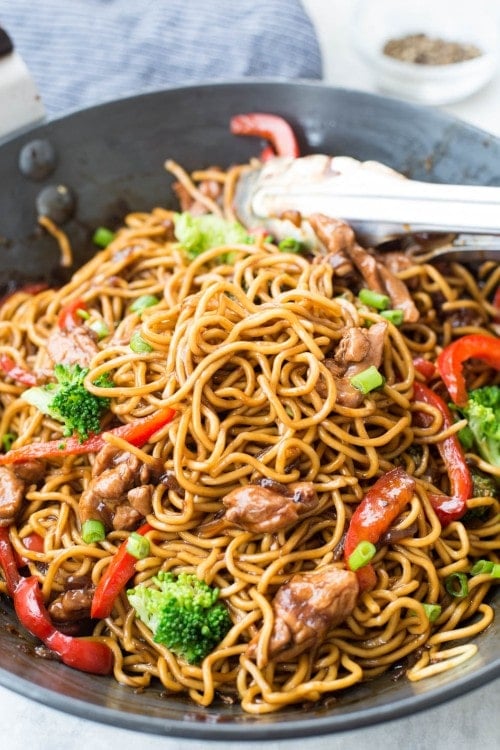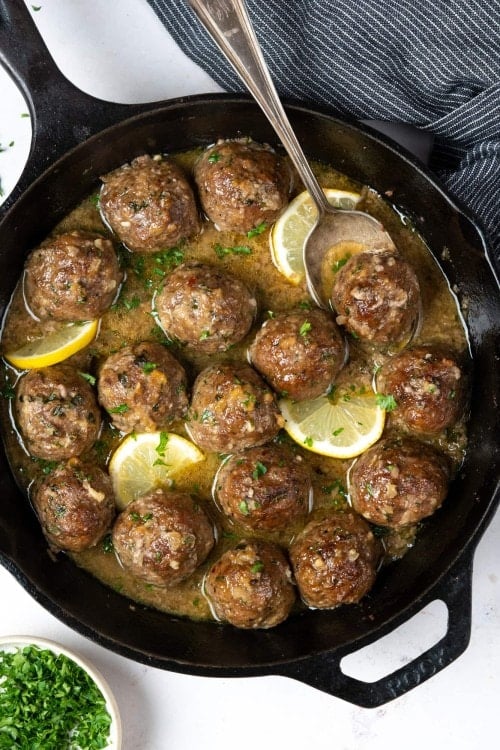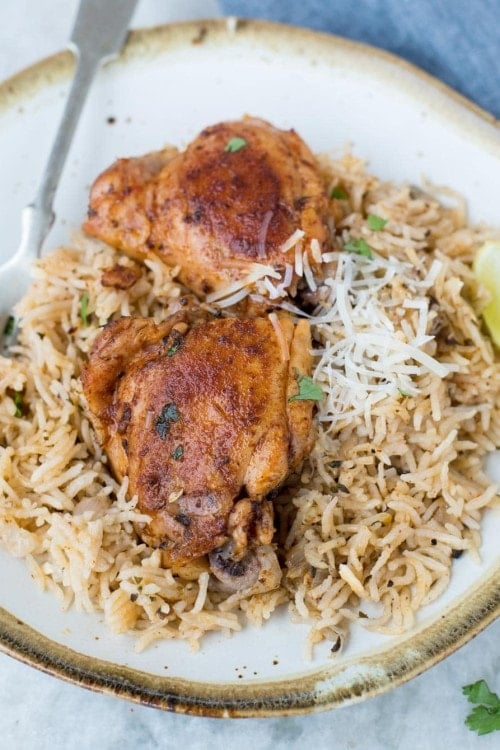Kimchi Fried Rice
Kimchi Fried rice with tons of flavor from Kimchi, Gochujang, and soy sauce, is one of the best ways to jazz up leftover rice. Top it with a sunny side up for a delicious meal.
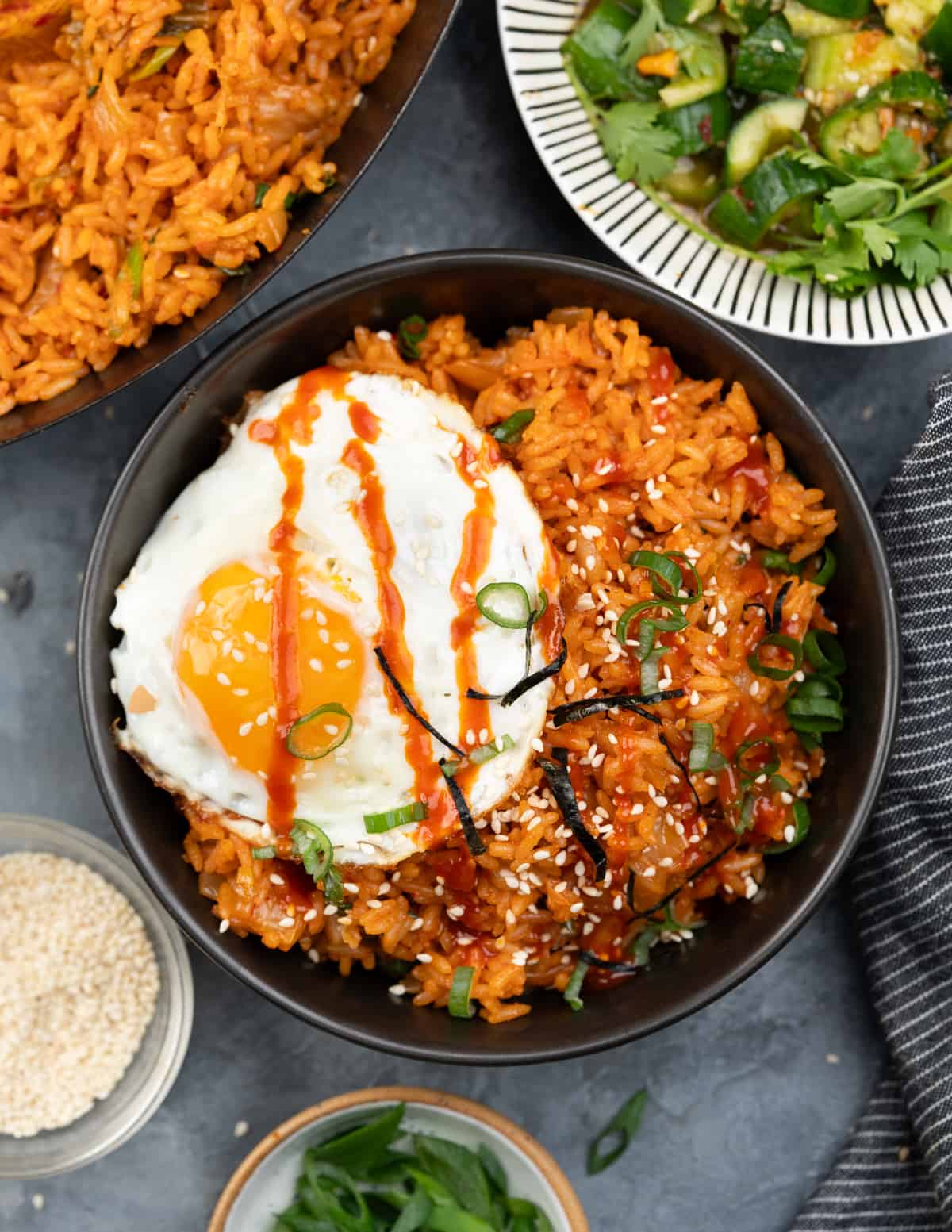
Kimchi Fried Rice
Why settle for regular fried rice, when you can have a flavor-packed delicious Kimichi fried rice (Kimchi Bokkeumbap) with a handful of ingredients. A staple in many Korean households and a perfect way to use up a jar of mature Kimchi. While you can load it up with other veggies and protein, this version is basic. I love to have just like that with a jammy sunny side up and a sprinkle of furikake.
Korean cuisine is quite new to me. To begin with, I tried a few viral Korean TikTok recipes. And then I got so hooked to the flavors, that you would now find a tub of Gochujang and a jar of kimchi all the time in my refrigerator.
Kimchi is a nutritious powerhouse, but that’s not all – it also brings incredible flavor to the table! The fermented sour, spicy taste of kimchi might take some time to get used to. So if you are new to kimchi, then this kimchi fried rice is a great way to get introduced to the probiotic. Or if have a jar lying in the refrigerator and its too mature to consume as it is, then add it some cold leftover rice to jazz it up.
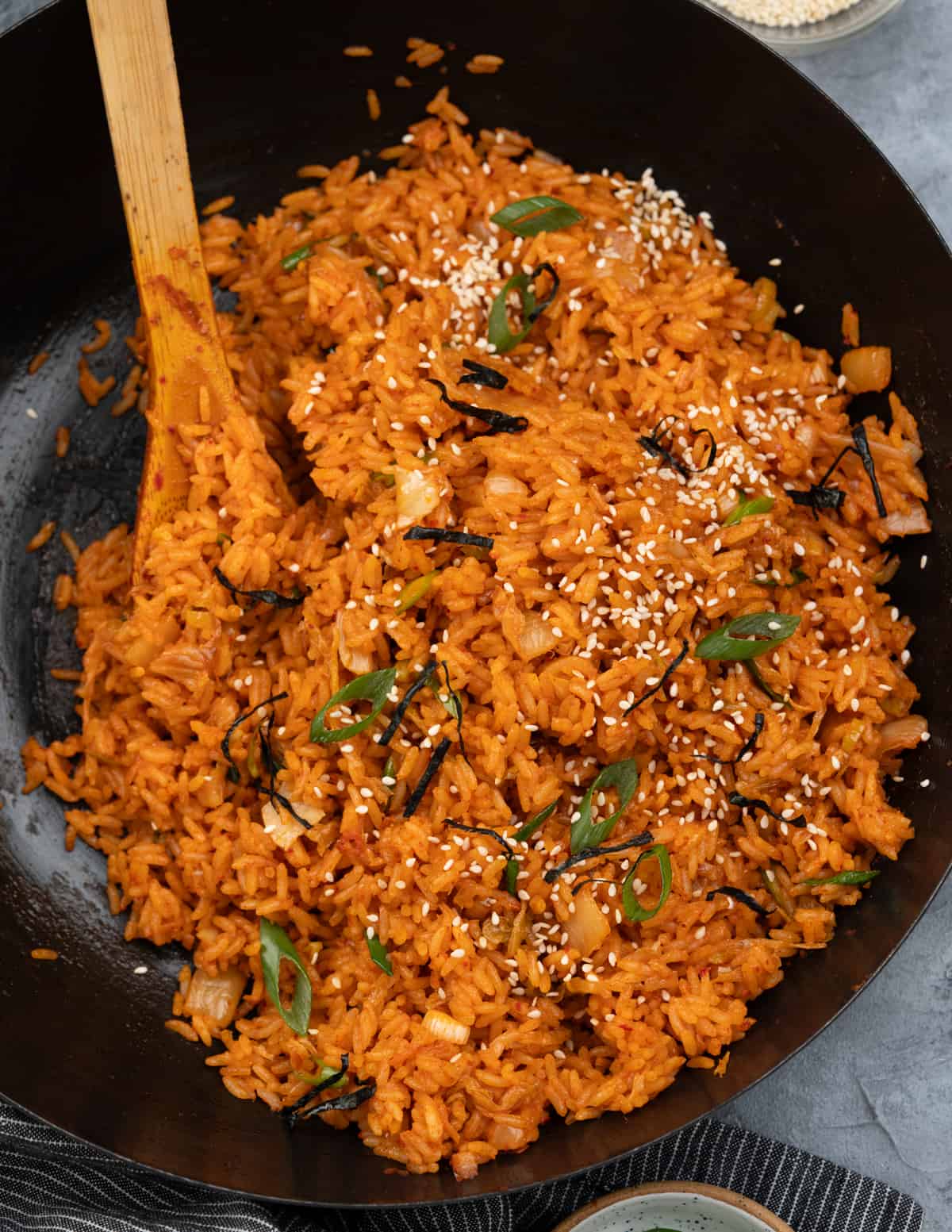
Ingredients
Here is the list of ingredients for the basic fried rice.
- Old white rice – My preference is short-grain white rice, better if it is a day old. Medium-grain rice will also work. Basmati rice has a strong aroma and the rest of the flavors don’t sit well. Brown rice doesn’t work well in fried rice.
- Kimchi– Go for a few days old kimchi for depth of flavor.
- Gochujang– Again a Korean staple. It’s fermented bean paste with sweet and spicy notes.
- Soy Sauce- A dash of soy sauce will only make the fried rice better.
- Scallion– Use the white part to saute in oil and the green part for garnishing.
- Sesame oil– toasted sesame oil for garnishing.
- Neutral cooking oil- any neutral cooking oil.
- Butter– finish off the dish with a dollop of butter. it’s optional but adds a beautiful rich flavor.
- Toasted sesame seeds
- Seaweed strips
Adding vegetables or protein makes it more wholesome and filling. You can add diced carrot, green peas, bok choy, and mushrooms(enoki especially). Bacon makes everything better and I love to add it sometimes. Cooked shrimp, pork, or chicken can also be added for protein.
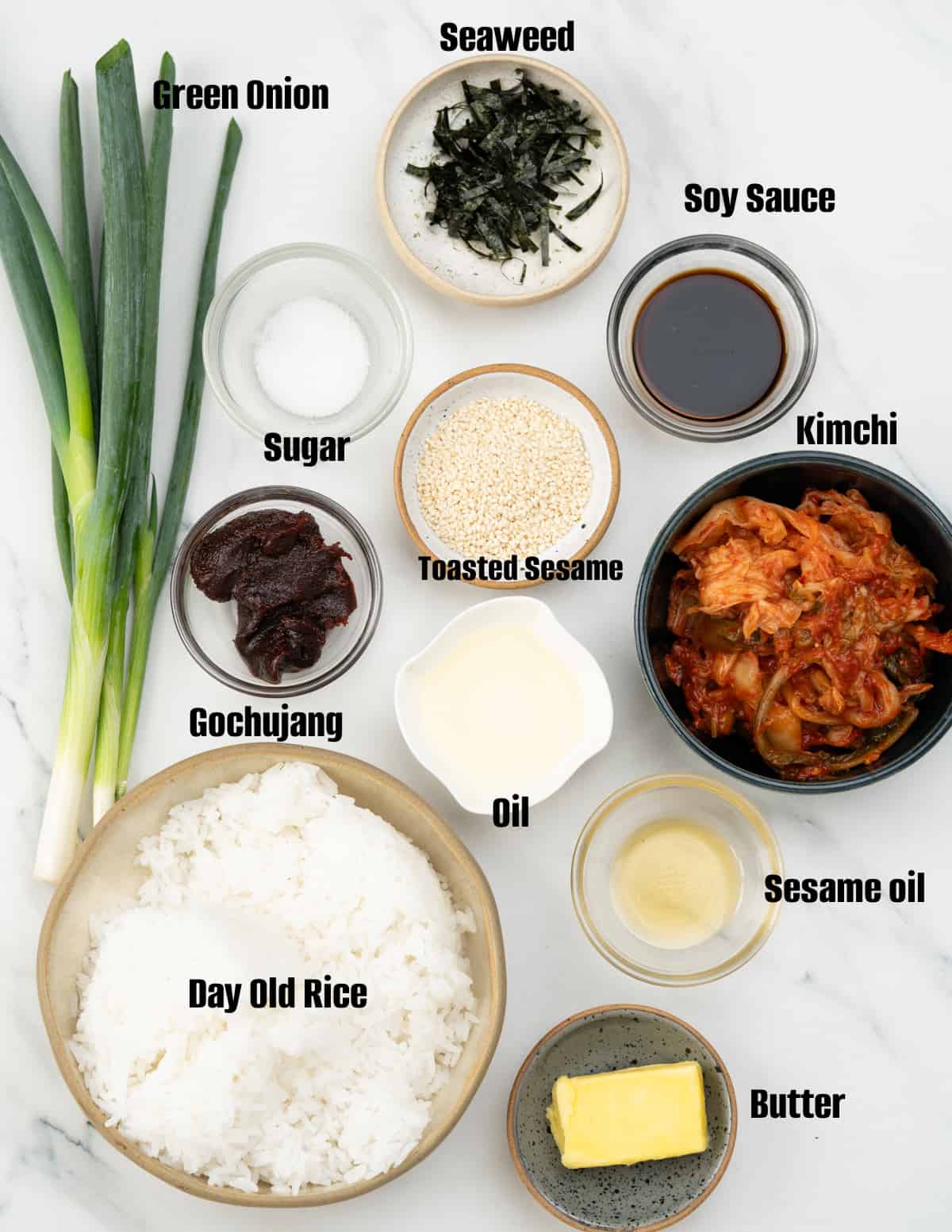
Cold leftover rice for fried rice?
Ok, when it comes to fried rice, every recipe calls for a day-old refrigerated cold rice. The reason is, that when rice is refrigerated, the grain dries up making it less starchy. This ensures the fried rice stays nice and fluffy and also soaks up all the sauces. Also while stirfrying the rice, the grains will not break easily. If using fresh rice, then often it ends up mushy.
But what if you don’t have leftover cold rice? You can still make it with same-day rice. Cook rice with a little less water than you usually do. Then spread rice on a baking sheet in a single layer (maybe divide between two sheets) and let it cool down completely for 1-2 hours. Once it comes to room temperature, you can also pop it in the refrigerator for some time for the rice to dry up a little more. Then you are good to go.
Step by step (with photos)
Keep all ingredients measured and ready before you begin with the recipe
Prep Kimchi
Kimchi is loaded with juice and often has big chunks of cabbage. It’s better to squeeze out the juice from the kimchi and measure, though it will be added back to the dish again. By doing so you will have control over how much juice you are adding the to rice. Too much of it and it will make the rice watery.
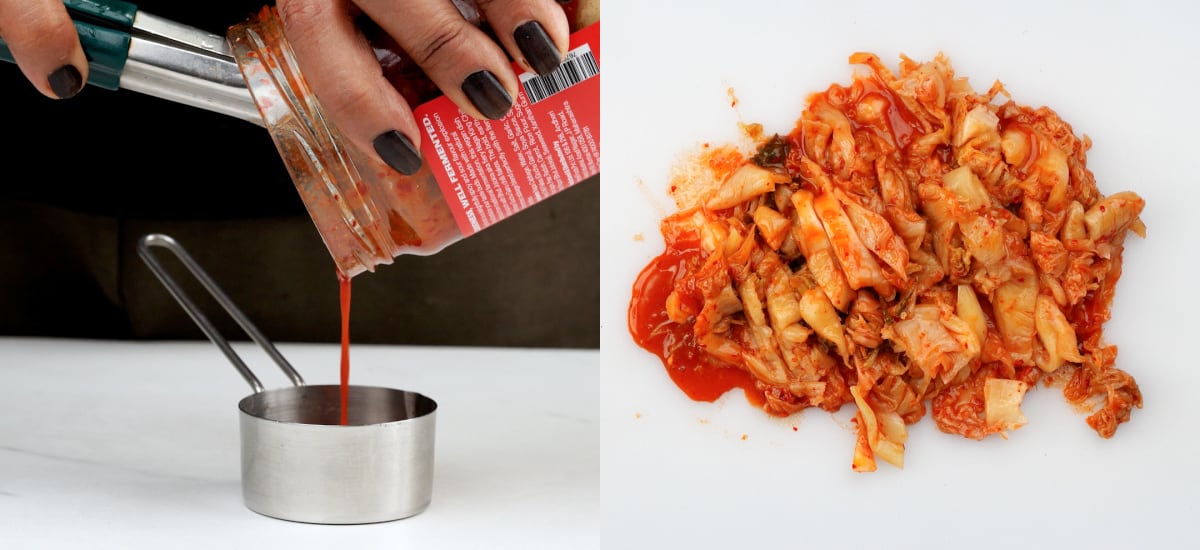
Make sauce
Gochujang is thick and best to dissolve it instead of adding directly to the wok. Mix gochujang, drained kimchi juice, and soy sauce until smooth.
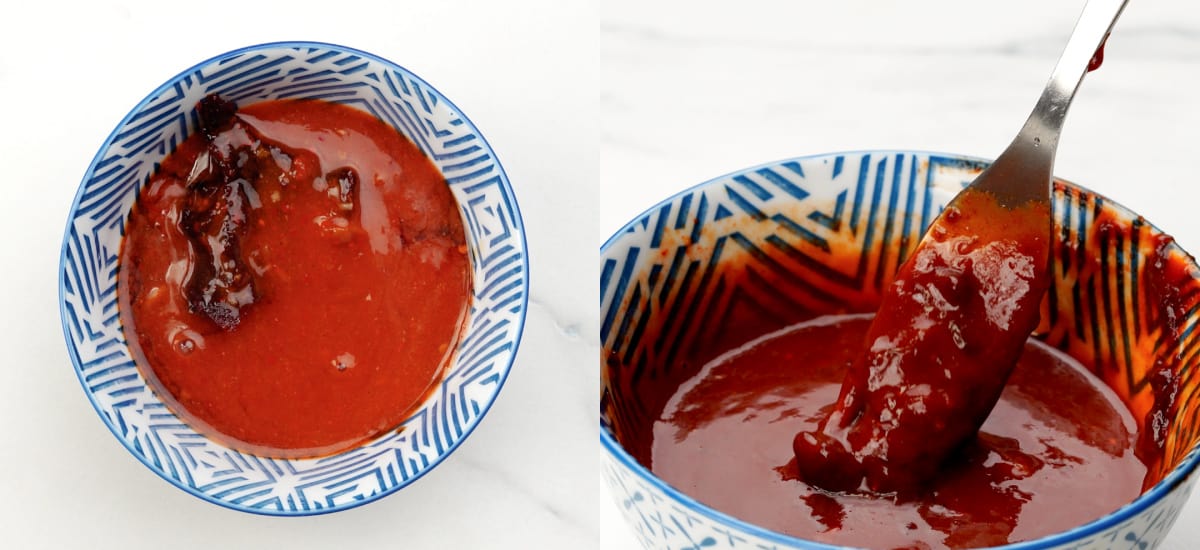
Caramelizing Kimchi
Cook the white parts of the green onion. If you would like to add ginger or garlic, then add it now. Add chopped kimchi and cook for 2-3 minutes until it looks almost dry and slightly caramelized.
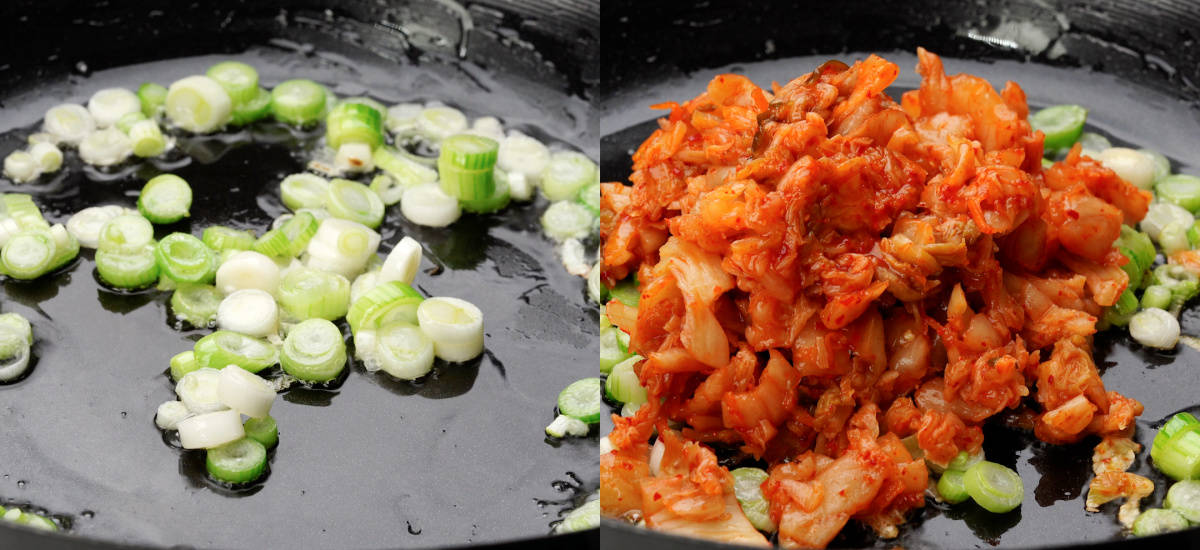
Add stir-fry sauce
Add the prepared sauce to the wok and cook it until it has reduced and the mixture looks very thick. Cooking down the sauce increases the depth of flavor. It is important to cook the mixture until it has thickened well, or else the rice will become mushy not fluffy
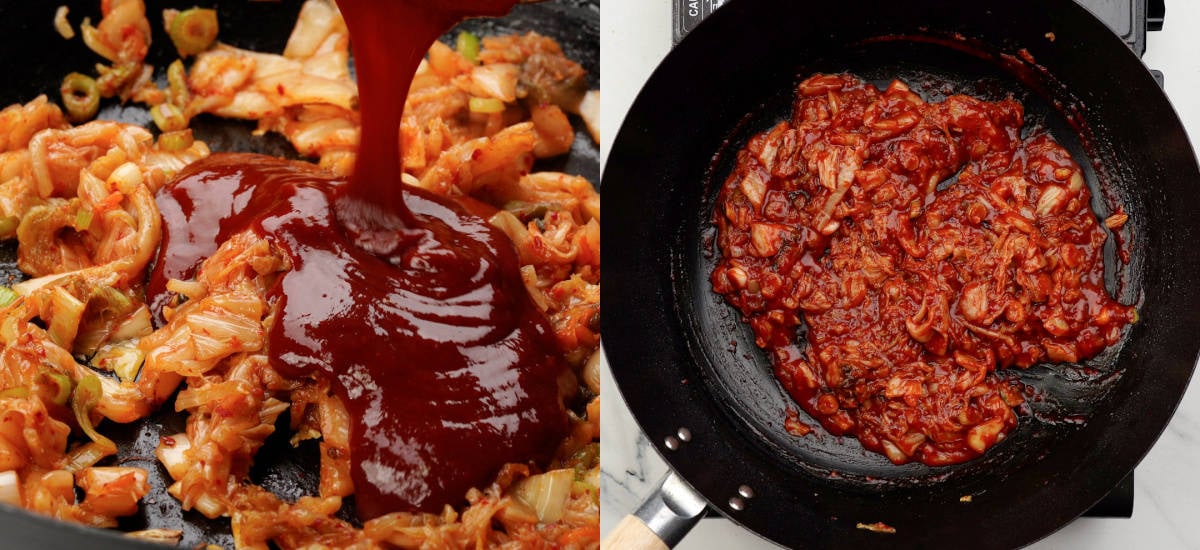
Toss rice
Once the sauce has reduced to a thick consistency, toss in the rice and mix gently until well coated. I love to toast the rice for a while on medium-high heat for a great fragrance. Finish It off with a dollop of room-temperature butter and green onion.
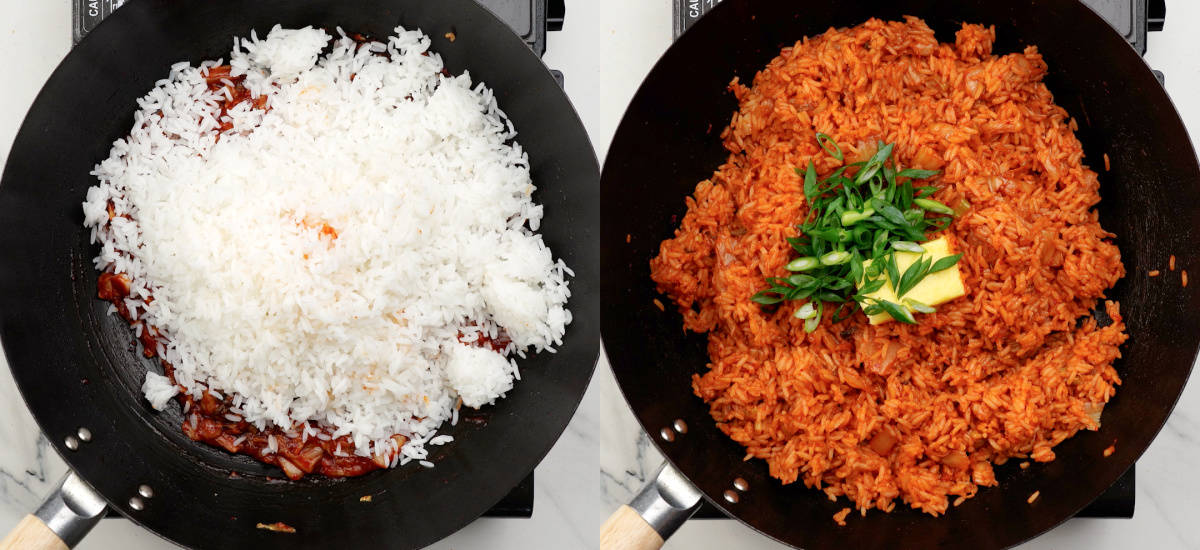
Tips for making fluffy fried rice
- Good Quality Kimchi: Kimchi is the star ingredient in this fried rice. So use a good quality mature Kimchi to get the best of the flavors.
- Preferably use cold day-old leftover rice, if using same-day rice follow the trick shared above for perfectly fluffy fried rice.
- As it goes with any Asian stir fry recipe, use a wok if possible. It gives ample room to toss the rice. Or a large skillet as an alternative.
- Make sure you don’t use not more than 1/4th cup of kimchi juice. And before adding the rice to the wok, cook the kimchi and sauce to a thick consistency. Otherwise, the rice will turn mushy and clumpy.
- Keep 1/2 cup of rice handy. if the rice turned out to be too strong with kimchi flavor or it looks clumpy because of
Storage
The beauty of leftover rice dishes is they store well, making it ideal for meal prep. It stays well for 2-3 days in the refrigerator. In fact the flavors get better the next day in this case.
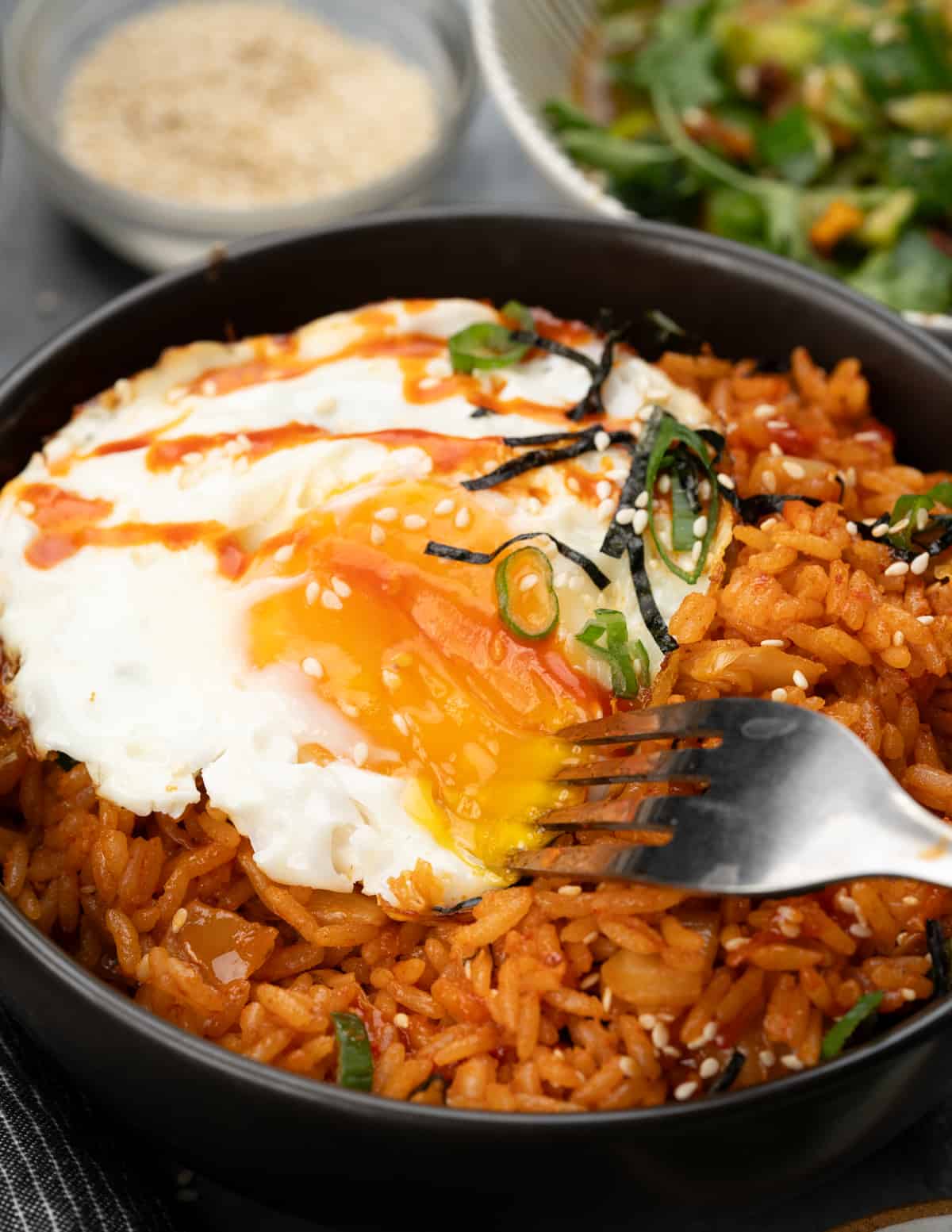
Serving suggestion
Top it with sunny-side-up or soft scrambled eggs, a good sprinkle of furikake or seaweed strips, and green onion. Cooling cucumber salad is best to balance the spicy fried rice. This Korean chicken thigh is a reader favorite and will pair well with fried rice.
Other Rice recipes you might want to give a try
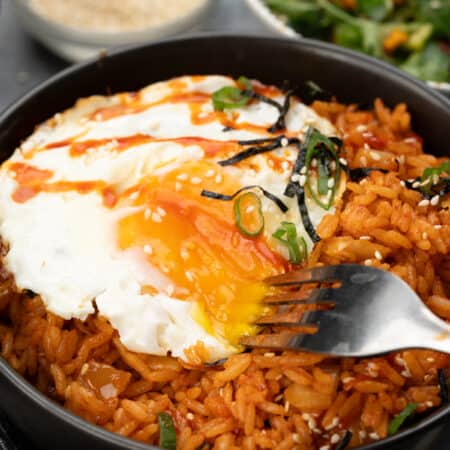

Kimchi Fried rice
Ingredients
- 3 Cups Cooked white rice
- ¾ Cup Kimchi
- 2 Tablespoon Oil
- 2 Teaspoon Soy Sauce
- 2-3 tablespoon Gochujang
- ½ teaspoon sugar (ref note)
- 2 Teaspoon Sesame Oil
- 3 green onion (Green and white part finely chopped separately)
- salt and Pepper
For topping
- Toasted sesame seeds
- seaweed strips
- fried egg
Instructions
- Squeeze as much juice as possible from kimchi, collect 1/4 cup of kimchi juice. Roughly chop kimchi.
- In a bowl mix gochujang, reserved kimchi juice, and soy sauce until smooth.
- Take a wide pan or a wok. Add oil and heat.
- Add white part of green onion and cook for 30 seconds.
- Then add chopped Kimchi. Cook for about 1-2 minutes until the kimchi is fragrant and start to caramelize.
- Add sauce made in the previous step and let it cook for 2-3 minutes until the mixture looks thick and has come together.
- Then stir in rice. Carefully mix the rice with the sauce making sure not to toss vigorously (else the grains will break) . Cook for 2-3 minutes tossing in between to toast the rice a bit.
- Add soft butter, green onion and toasted sesame oil. Toss again until mixed.
- While serving top with a fried egg, seaweed strips, toasted sesame seeds and green onion.
Video
Notes
- Kimchi, soy sauce and gochujang has already have salt in it. So add salt accordingly.
- If the kimchi to too sour, then adding little sugar will balance the sauce. Else you can skip sugar.
- If you love kimchi flavor, you can increase the quantity up to 1 cup.
